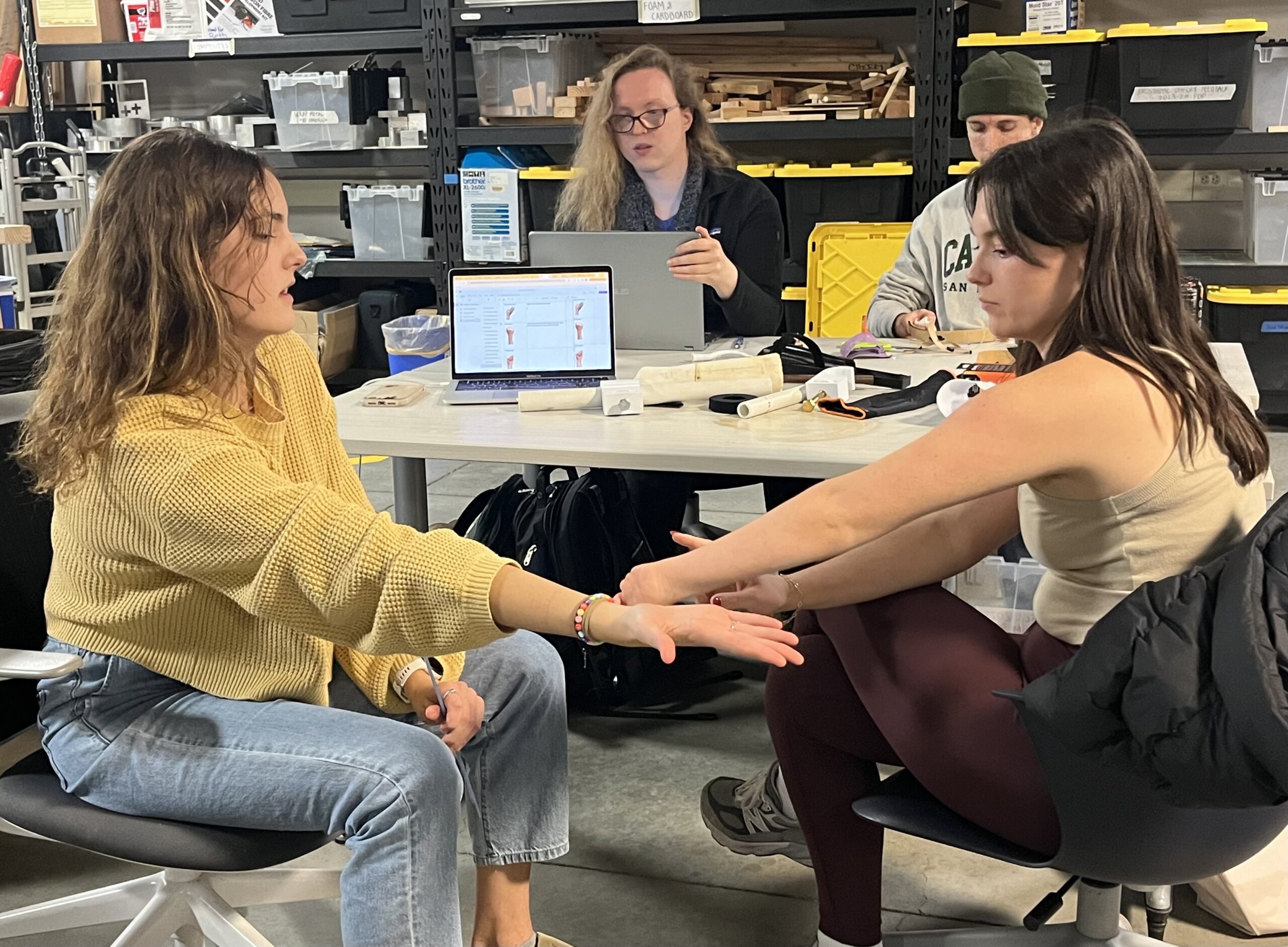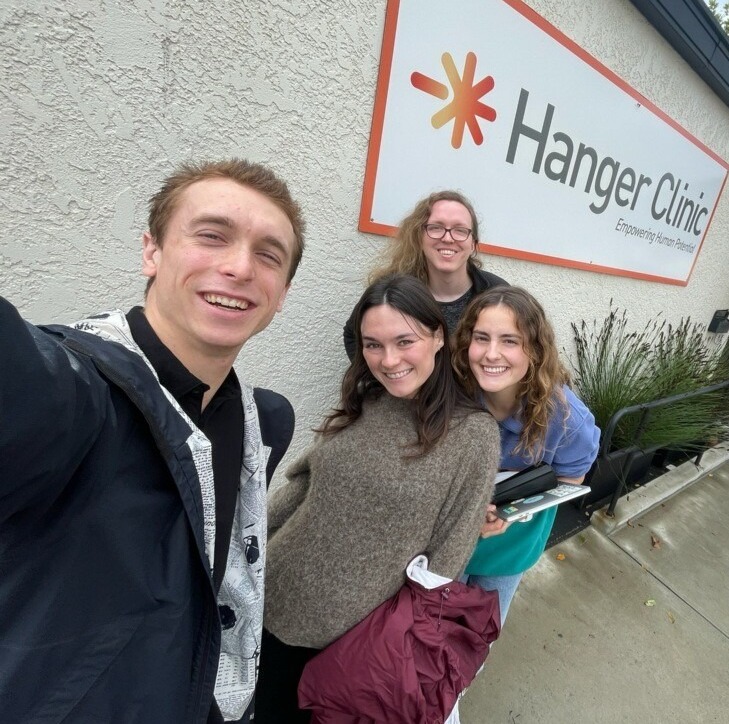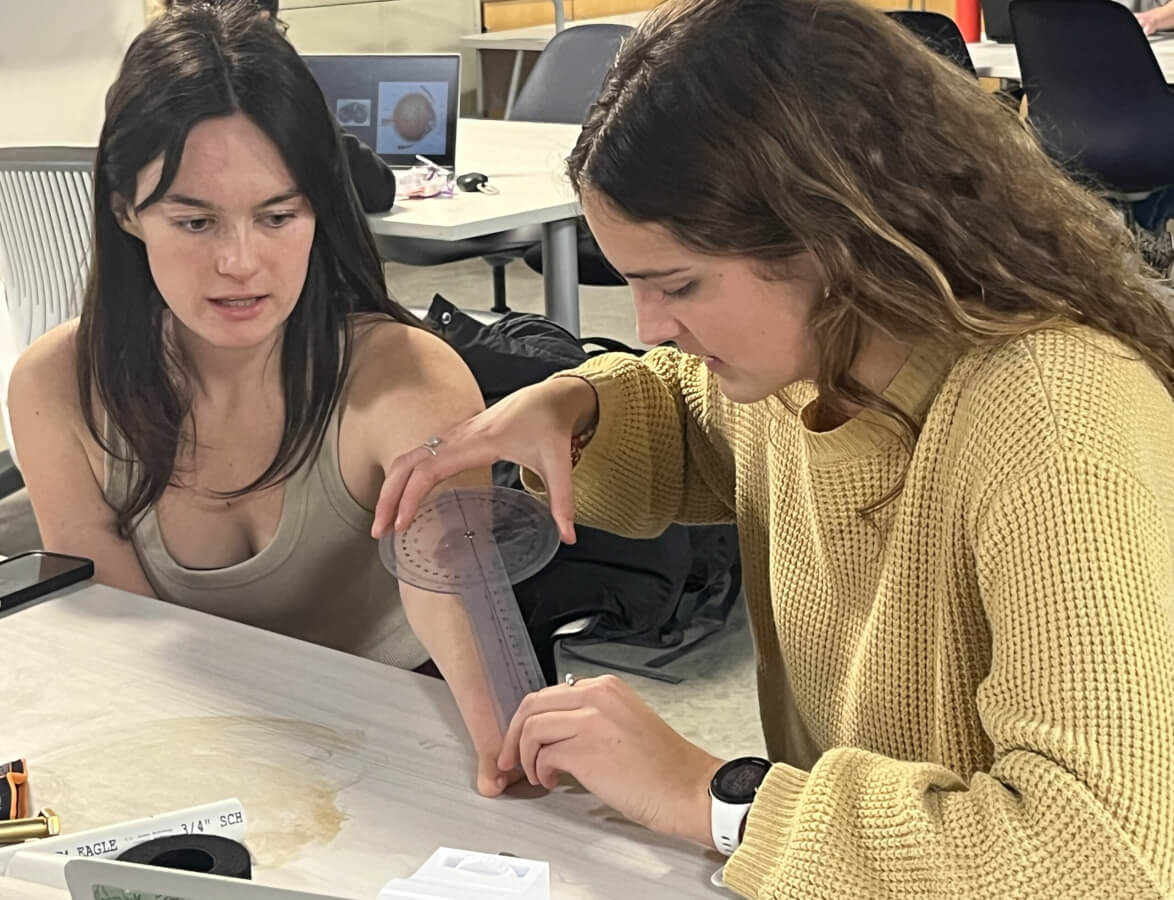Materials engineering major Madeline Everson knew obtaining her Cal Poly machine shop certification would be a daunting endeavor, requiring her to complete tasks with wood and sheet metal tools using just one hand.
Born with the ulna and radius in her left hand fused together – a condition that mystifies doctors to this day – Everson has always navigated her world with a blend of strength and confidence. Yet, she was aware that mastering the safe operation of drills and saws and other machines would test her in new ways.
During a spring quarter session, when Everson participated in her red tag tour, mechanical engineering major and shop tech Cameron Yartz supervised, providing both support and encouragement.
“It was scary, but Cameron really helped me through the process,” Everson recounted.
Fast forward to fall quarter, when Yartz was selected for an interdisciplinary team dedicated to assisting Everson from a different angle – by engineering a device that will enable her to resume weightlifting in the gym, a passion sidelined since her prosthetic device failed.
The senior project team’s three members are rapidly learning about prosthetics as they develop what they call the Prosthetic Aid for Lifting (PAL) for Everson, aiming to have it gym-ready by the end of the school year.
“This project is definitely out of our comfort zone, but we are motivated to succeed,” Yartz said. “We all care a lot about helping our peer.”

Yartz recently gathered with teammates Emma Caringella (biomedical engineering) and Dawn Veditz (mechanical engineering) in the TECHE Lab to discuss progress on their latest prototype. The lab is devoted to generating and fostering innovations that improve the quality of life for people with disabilities.
The group huddled around a 3D model hot off the printer from the Mustang ‘60 machine shop, where Yartz still works, to test the fit of the device that will consist of a semiflexible shell with soft neoprene sleeve and tightening mechanism.
The device will replace Everson’s Pro Cuff prosthesis, which she has used since high school. Due to parts failure and the pain it causes her, she is unable to use it to lift anything over 5 pounds.
Veditz compared the device’s current functionality to attempting to lift a grocery bag with a ruler strapped to one’s wrist.
Caringella added, “We all tried the device on, and there were a lot of issues with it. After seeing it, we had immediate ideas on how to improve it.”
In the process of refining their next prototype, the team deliberated over potential modifications as Everson – the project sponsor – joined the group at their lab table to test the fit of the latest version.
Although she is part of a separate senior project team, Everson acts as an unofficial fourth member of the PAL team, contributing her expertise in materials engineering.
“Having a sponsor who understands the design process is as helpful for us as it is for Maddie,” said Yartz, who aims to pursue product design after graduation.
Caringella, who plans to further her education in graduate studies and pursue a career in biomechanics, said her first experience working with a patient proved invaluable.
“This project is unique because we receive direct feedback from our sponsor, who is also our peer and a fellow engineering student,” she added.

Everson, who hails from Healdsburg, California, was a patient at Shriners Children’s Hospital until she turned 18. Despite extensive research, the doctors there could not determine the root cause of her condition.
Prosthetics allowed her to actively participate in athletics and pursue her passions, including weight training sessions with friends. However, when the device failed during her engineering studies at Cal Poly, she was confined to treadmill exercises – a lonely endeavor for the social Everson.
In an introductory biomedical engineering course (BMED 212), a group of students laid the groundwork for redesigning a device for Everson, while the PAL team further developed and refined the concept.
A pivotal moment came when the team refined the device’s design specifically to enable Everson to perform bent-over rows, triceps pushdowns, lat pulldowns and bicep curls.
“We had to define activities that Maddie wanted to do at the gym so we could make the scope reasonable,” Caringella said.
During the TECHE Lab session, Caringella took measurements of Everson’s forearm, while Veditz recorded the data on her laptop. Their collaboration is a step toward creating a prototype that Everson will test in the gym and provide feedback on.
“We conducted research on existing solutions, explored different attachments and engaged in extensive brainstorming,” said Veditz, who, with a foundation in robotic prosthetics, is keen to transition her focus toward a career in human prosthetics. “I’ve also gained valuable insights into biology, which will be incredibly beneficial.”
By the end of the quarter, the team plans to order parts for the device, proceed with its manufacturing in the spring, and unveil the final product at the senior project expo.
They discussed modifications for the next round of 3D printing with enthusiasm, while Everson expressed her excitement about their progress.
“All of our hearts are in this,” Caringella said.
Everson expressed her gratitude for the team, noting, “I couldn’t imagine a better group for this task. It’s incredible to see so many people eager for me to succeed.”
By Emily Slater



